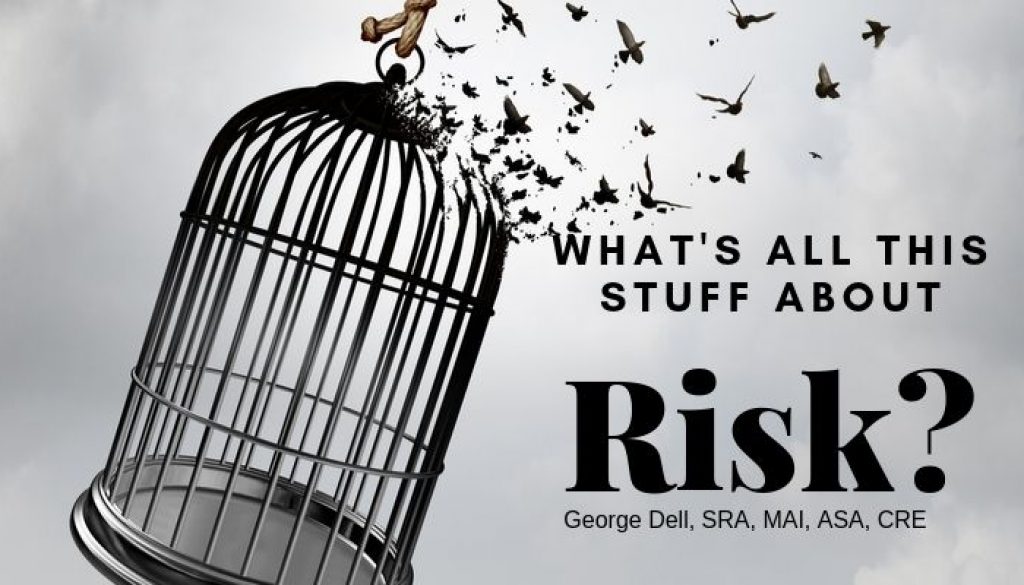We seem to be hearing stuff about risk recently. Why?
Back in the old days, before internet but after the wheel – It was my challenge as a new appraiser to scratch together four or five comps, then put three of them on a form, or perhaps even all five on a table. We called the table a ‘grid,’ presumably because it looked like the grid on a bird cage.
I soon discovered I was free to fly around inside the grid cage all I wanted. I adjusted to what I had. I learned to live inside the cage.
Then flying electrons came. They flew right through the grid. There were many. Sometimes even a dozen or more. All claiming to be comp messages. It was too much. I had the five. Should be enough. Yep. That’s what my trainer said. That’s what my appraiser education said. And sure enough, it was on my test for my new appraiser license.
Even my hard-fought designations. They also required that I provide an opinion. And that opinion was to be based on the four or five ‘best’ comps I had.
Then some clients got troublesome. They asked: Why didn’t you use comp 6? Why didn’t you use ‘better’ comps? Troublesome. They had gotten the same electrons. Flew right through my cage grid. Right through. They had no respect for my beautiful bird comp cage.
Why? I had delivered my opinion. My opinion – well “worthy of belief” just like USPAP required. I was worthy, but they just didn’t understand. And I didn’t understand. Why are they picking on me? Why are they picking on all my friends? They’re all full of worthiness!
Then someone said, they don’t really care about your credibility. They only care about whether they will gain or lose on the loan they want to make. They only care about the dollars they get back, or don’t get back. They put out a bunch of dollars, and they need to get back more dollars. Dollars cost money. Collecting dollars costs money. Paying commissions costs money. And salaries and insurance and office space and computers and software and risk analysts – all cost money.
So “are we gonna get our money back?” Enough to cover all those costs? And how about the people who lose their jobs and can’t make our money back? What’s our chance of getting back our money, covering our costs, and even make a profit? What’s the risk?
In the old days, the market price was all that counted. Markets tended to be more stable. Loans were at most 80% of the “value.” And there was no way to really figure out what the risk of loss was. Officers, underwriters, and agents did ‘appraisals,’ sometimes on the back of a napkin.
Seldom was there ‘market’ risk. Market risk came to be defined as the “risk of losses … that arise from movement in market prices.” Market risk in turn could be caused by some other risks, including interest rate risk, and the risk that equity in the property will not cover the loan amount.
Collateral risk is actually simple. “If I loan you money, what are the chances that I will not get my money back. That’s all I really care about.”
On the other hand, market price (today called “market value”) is easy to understand, and a starting point for any calculation of risk or other type of value.
Clients only want one of three things: 1) risk of loss; 2) potential for gain; and, 3) fairness.
Stay tuned for more risky topics . . .
Are you ready to start working today on a better yesterday for you and your family? Check out my educational website, Valuemetrics.Info.
